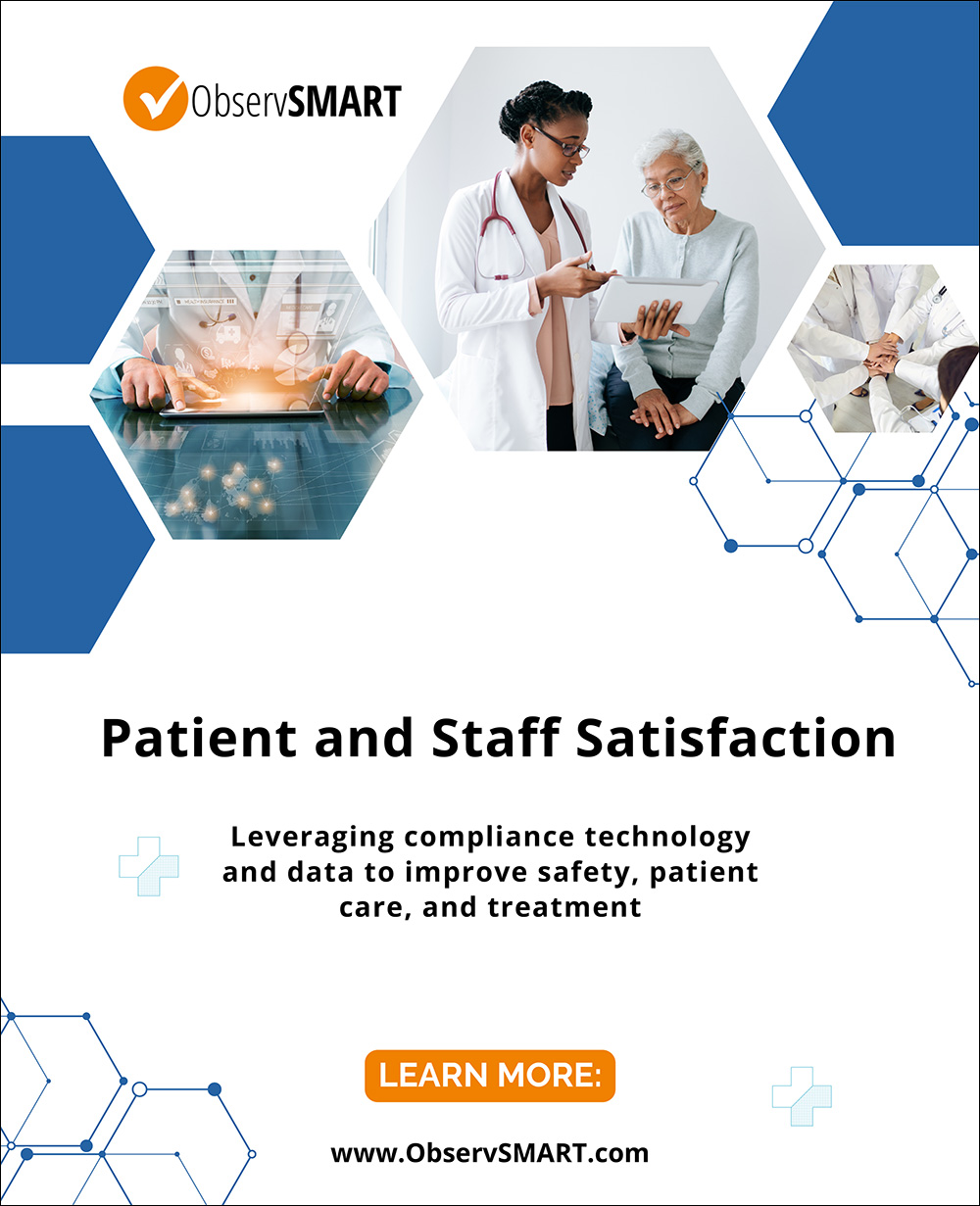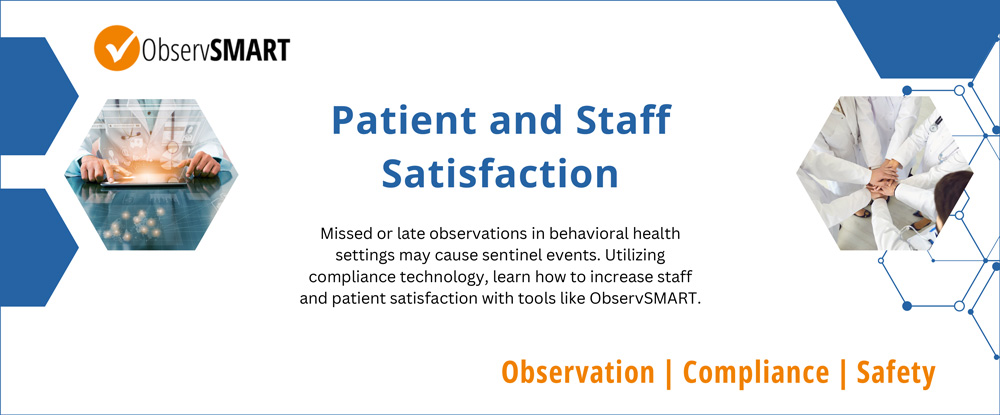In Healthcare, behavioral health experiences significant challenges, including physical and psychological components of patient well-being. Successfully addressing these challenges involves integrating data-driven technology into quality of care. This article delves into the correlation between behavioral health and patient and staff satisfaction, emphasizing the transformative role of technologies.
Traditional rounding methods on the market today often have limitations that do not consider the complex care workflows of behavioral health and the importance of compliance. They are confined to a block of time without assurance that staff were with patients during observation. In contrast, proximity-required compliance-driven tools can offer a shift by ensuring consistent check-ins on patients without confining them to their rooms and encouraging a true 15, 30, or 60-minute interval. This shift ensures patient safety and staff engagement, enhancing the patient’s well-being.
Proximity-required technology like ObservSMART promotes staff engagement and fosters collaboration and rapport between patients and staff. By giving staff the front-line tools they need, with reminders and alerts to make certain that patients are seen every 15, 30, and 60 minutes, rather than blocks of time, healthcare staff establish stronger relationships and gain deeper insights into patients’ needs and there is less opportunity for incidents. This heightened engagement allows personalized care tailored to individual needs and conditions in real time, elevating patient satisfaction levels.
Central to effective patient safety and care management is recognizing behavioral health and pain as a multifaceted experience encompassing both physical and psychological distress (APA). Technologies can integrate assessments, including pain and depression scales, into routine rounds, enabling comprehensive patient well-being evaluation. Through easy access to documentation and analysis of patient progress, staff members can promptly identify areas requiring intervention, optimizing treatment and patient satisfaction (ObservSMART).
Moreover, technology like ObservSMART addresses not only patient safety but can also ensure environmental safety. By consistently monitoring patients and their surroundings, the risk of falls – a common concern in healthcare settings – is also significantly mitigated. Consistent checks reduce the likelihood of adverse events associated with medicated-induced drowsiness or impaired mobility, fostering a safer care environment.
Technology that offers an integrated data-driven approach to patient care provides real-time insights into physical and psychological aspects of patient well-being. ObservSMART reporting and in-app reporting allow staff members to quickly identify trends and patterns in patient data, facilitating informed decision-making and proactive interventions. By leveraging technology to gather and analyze data points that suggest areas for improvement- whether physical, mental, or emotional- staff can customize treatment plans to address patients’ evolving needs much more effectively.
Compliance technology can support health management initiatives and promote preventive care measures. In behavioral health settings, staff may use historical data to identify trends for patients at risk of self-harm, falls, suicide, pain, elopement, and many other concerns. This approach improves overall environmental awareness and contributes to significant cost savings by mitigating risk.
Technology can also improve staff and patient satisfaction by ensuring patient safety and staff engagement, supporting complex workflows, and promoting a better quality of care. By leveraging the capabilities of compliance tools like ObservSMART, healthcare organizations achieve better operational efficiency and communication. As technology continues to evolve, the role of compliance technology in healthcare will only become more essential in improving the staff and patient experience.
Compliance technology not only improves patient and staff satisfaction but also contributes to the overall efficiency of healthcare. By utilizing technology, staff can document patient progress while providing real-time insights. Using rounding technology in behavioral health settings may reduce administrative burdens, minimize paperwork errors, and streamline communication between care teams. This improved efficiency allows healthcare organizations to allocate resources more effectively, reduce operational costs, and ultimately improve patient care quality.
Furthermore, using portable, proximity-required technology eliminates the need to constantly go back and look at hours of video footage to know if staff are completing their observations with patients. Physicians have greater confidence that patients are being checked on and don’t feel the need to automatically default to a 1:1. The technology also allows for tighter observation intervals (i.e., 5 or 7 minutes), as opposed to defaulting to a 1:1. This can free up staff for other patient care (ObservSMART).
Compliance technology seamlessly integrates with electronic health record (EHR) systems. Tools that integrate with EHR systems can update patient records, document care interventions, and provide real-time alerts and notifications to care teams. This integrated approach to healthcare improves communication, reduces medical errors, and enhances patient safety and satisfaction.
In conclusion, consistent checks, staff engagement, data, and technology offer a transformative approach to facilitate staff and patient satisfaction and quality of care in behavioral health, with various symptoms such as depression and chronic pain. By using innovations like proximity-required monitoring technology, personalized care delivery, and proactive risk mitigation, you empower care teams to navigate complex healthcare landscapes confidently, improving the patient and staff experience.
Technologies like ObservSMART are determined to find a solution to ensure adherence to safety protocols and positively influence patient experiences. For more information, reach out to cshows@invisalertsolutions.com or visit www.observsmart.com.
References
American Psychological Association. (n.d.). Understanding chronic pain. Retrieved from www.apa.org/topics/chronic-pain
National Institute of Mental Health. (n.d.). Behavioral health trends in America. Retrieved from www.nimh.nih.gov/health/statistics/mental-illness
ObservSMART. (n.d.). Retrieved from www.observsmart.com/







